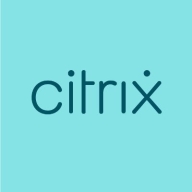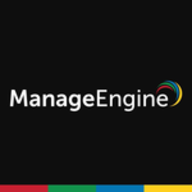


Citrix Endpoint Management and ManageEngine Endpoint Central are competing products in the realm of endpoint management solutions. Citrix Endpoint Management has an advantage in integration and cross-platform management, while ManageEngine Endpoint Central is favored for its comprehensive feature set and ease of growth.
Features: Citrix Endpoint Management supports diverse device platforms, offers strong integration capabilities, and is well-suited for hybrid work environments. ManageEngine Endpoint Central provides extensive features like patch management, software deployment, and mobile device management, offering a rounded toolkit for endpoint management.
Room for Improvement: Citrix Endpoint Management could enhance its user interface, improve customization options, and expand patch management capabilities. ManageEngine Endpoint Central could benefit from improving its reporting capabilities, enhancing user interface fluidity, and reducing initial setup time.
Ease of Deployment and Customer Service: Citrix Endpoint Management is straightforward to deploy with robust customer service and extensive support, making it ideal for large-scale implementations. ManageEngine Endpoint Central offers a simpler deployment process and responsive support, providing an advantage for organizations seeking quick implementation.
Pricing and ROI: Citrix Endpoint Management involves higher upfront costs with promises of long-term ROI due to integration benefits, suitable for organizations with diverse needs. ManageEngine Endpoint Central's lower initial cost structure offers attractive ROI for small to mid-sized enterprises, making it more favorable for budget-conscious buyers seeking immediate savings.
Everything we've gained from it makes my job easier day after day, and I see value in it as an engineer.
Microsoft Intune not only saves costs by reducing the number of personnel needed but also offers a comprehensive solution for managing laptops, applications, security, individual access, and enrollment.
Importantly, when someone leaves the company, it helps protect document access on their devices.
After implementing Citrix Endpoint Management, there is a return on investment for my customers because we provide three services: first is the license, where we got margin; second, deployment service, which typically has two types—one where Citrix will do the deployment and the other where a partner should do it, and we deploy this solution for about 80% of the customers in India; third is after deployment support.
When a support ticket is submitted, it directly reaches someone with Intune support expertise.
When I contacted Microsoft, they had the same expertise, if not more, which is phenomenal because I felt heard and my problem was solved.
Sometimes, the support provided is excellent, and the representative is knowledgeable, while other times, the service needs improvement.
Technical support for Citrix Endpoint Management is not satisfactory.
This product requires some mature understanding, so sometimes they can handle small problems, but for major or architecture-related issues, their L3 or our L3 engineer helps them understand the problem.
The support from Citrix has been satisfactory.
The support team is available via chat and will create a ticket if they're not available, providing assistance even for small issues.
While they are generally good, there could be improvements in their response times to align with our SLAs.
The scalability of Microsoft Intune is ten out of ten.
Ideally, we want to automatically segregate devices based on user properties like primary use, but currently, dynamic groups seem limited to device properties.
It supports organizations with 200 endpoints and those with more than 15,000 endpoints.
My colleagues using iOS have faced issues, such as logging problems requiring frequent password entries.
We have not experienced downtime, bugs, or glitches.
It appears Microsoft Intune undergoes changes without informing customers.
Microsoft Intune has been very stable.
The solution's stability is below expectations.
The solution is stable, though there are occasional restarts, which are not critical.
ManageEngine prefers not to display any information if it cannot be properly gathered.
The product is very stable, especially with the cloud version.
We haven't encountered issues very frequently.
Features like unlocking devices sometimes fail, and the support offered for other operating systems is insufficient.
There are communication issues, so you might start working with a feature without knowing if it will be deprecated six months from now.
Many third-party companies offer single-pane-of-glass reporting that shows you what your update environment looks like, how your patch is doing, application status, etc., but Intune's reporting is not intuitive.
The main issue is the change from perpetual licenses to subscription-based ones, which has increased our costs significantly.
With AI being present, they may increase some AI-related features in the future.
The units are not updating the operating system as specified in the policy.
It would be great if there was a smarter solution to address this issue.
Endpoint Central does not support Linux, which makes it challenging to patch Linux machines using commands.
The patch management module could be simplified as it is currently a bit complicated.
Introductory professional services, like a fast-track service, were included with our E5 membership, and there have been no additional costs.
The Intune suite and add-ons, such as batch management and remote help, are costly.
It costs approximately forty euros per user per month.
The switch to subscription-based licensing has made it much more expensive.
For this client, the solution has been quite cheap.
The setup cost pricing for Citrix Endpoint Management varies; I can say $3,000 per user license for setup.
ManageEngine products offer reasonable prices for their product quality.
The pricing is cheaper compared to other MDM products.
The pricing of ManageEngine Endpoint Central is quite decent.
Intune excels in configuration and compliance management for Windows 10, ensuring devices receive timely updates and adhere to organizational standards.
Dynamic groups allow us to set conditions for automatic membership, eliminating the need for user intervention or manual review and ensuring a seamless workflow.
Windows Autopatch is the most valuable because it removes the burden of patch management.
We have found the ability to manage user accounts on shared devices valuable as it reduces the need for multiple licenses, which saves costs.
The change to a subscription-based model has removed the financial benefit we previously had.
ManageEngine Endpoint Central is straightforward to use and implement.
ManageEngine Endpoint Central has significantly simplified my device management practices.
The GUI of Endpoint Central is very user-friendly, which simplifies the process of training new users.
| Product | Market Share (%) |
|---|---|
| Microsoft Intune | 32.6% |
| ManageEngine Endpoint Central | 10.7% |
| Citrix Endpoint Management | 2.2% |
| Other | 54.5% |



| Company Size | Count |
|---|---|
| Small Business | 116 |
| Midsize Enterprise | 46 |
| Large Enterprise | 152 |
| Company Size | Count |
|---|---|
| Small Business | 6 |
| Midsize Enterprise | 3 |
| Large Enterprise | 5 |
| Company Size | Count |
|---|---|
| Small Business | 25 |
| Midsize Enterprise | 14 |
| Large Enterprise | 35 |
Microsoft Intune provides centralized management of mobile devices and applications, ensuring security, compliance, and productivity through integration with Microsoft services like Microsoft 365 and Azure Active Directory.
Organizations use Intune for managing mobile devices and applications, enhancing security and compliance across platforms. With features like single sign-on, conditional access, and zero-touch deployment via Autopilot, it facilitates efficient operations. Intune's scalability, easy enrollment, and capabilities such as remote wipe support diverse device management, offering robust data protection and efficient operation. Despite its features, improvement areas include reporting, compatibility with non-Microsoft devices, and better support for macOS and Linux devices.
What are the key features of Microsoft Intune?
What benefits should users look for in reviews?
In industries such as finance, healthcare, and education, Microsoft Intune is implemented to ensure secure and compliant device management. Companies leverage its capabilities to deploy security policies and manage both corporate-owned and BYOD environments, facilitating a unified approach to data protection and compliance.
XenMobile is a comprehensive solution to manage mobile apps, data and devices, available both on-premises and in the cloud. Users have single-click access to all of their apps from a unified corporate app store and IT can easily configure, secure and support mobile devices. With XenMobile technology, IT can meet their compliance and control needs while giving users the freedom to experience work and life their way.
ManageEngine Endpoint Central is a unified endpoint management (UEM) solution offered by ManageEngine, a division of Zoho Corporation. It is designed to help organizations efficiently manage and secure their endpoints from a centralized platform. Endpoint Central provides a comprehensive set of features and capabilities to streamline endpoint management and enhance security across diverse devices and operating systems.
ManageEngine Endpoint Central Features:
ManageEngine Endpoint Central Benefits:
Reviews from Real Users
PeerSpot user, Sr Engineer Administrator at a university, says that "Its cross-platform capabilities and the ability to do both OS-level patching and third-party patching are valuable. It is difficult to find a software product that will do all that for you out of the box, and you don't have to do any configuration other than your initial setup. Once you do that, there is a very minimalistic approach to getting it operational. You can have it up and running within a 20-minute time span."
Park Armstrong, Chief Technical and Solution Architect at Vertigo Inc., writes that ManageEngine Endpoint Central is “Helpful for identifying and filling the gaps and meeting compliance needs, but each of their product works as an independent product and lacks integration”.
We monitor all Unified Endpoint Management (UEM) reviews to prevent fraudulent reviews and keep review quality high. We do not post reviews by company employees or direct competitors. We validate each review for authenticity via cross-reference with LinkedIn, and personal follow-up with the reviewer when necessary.